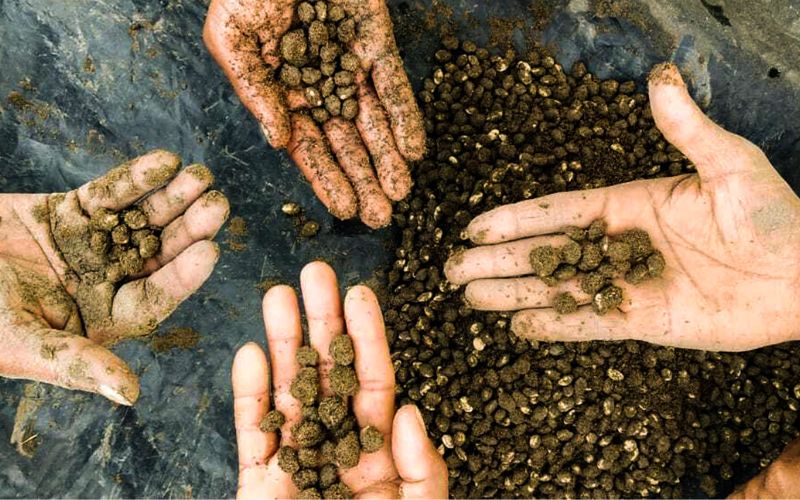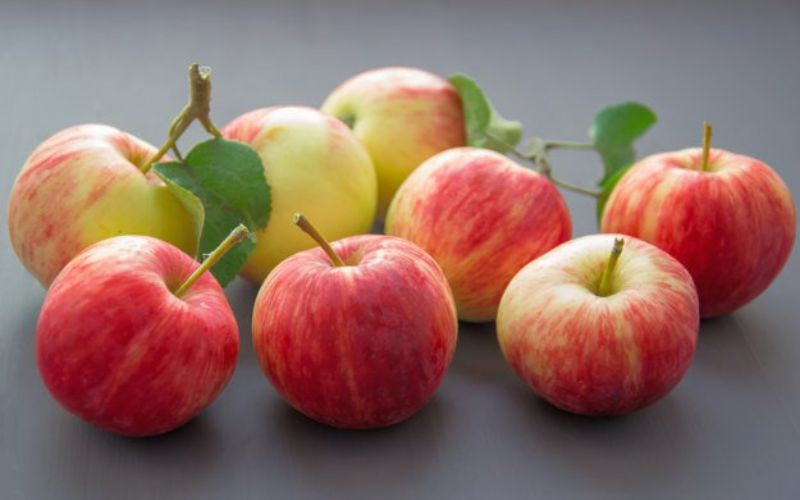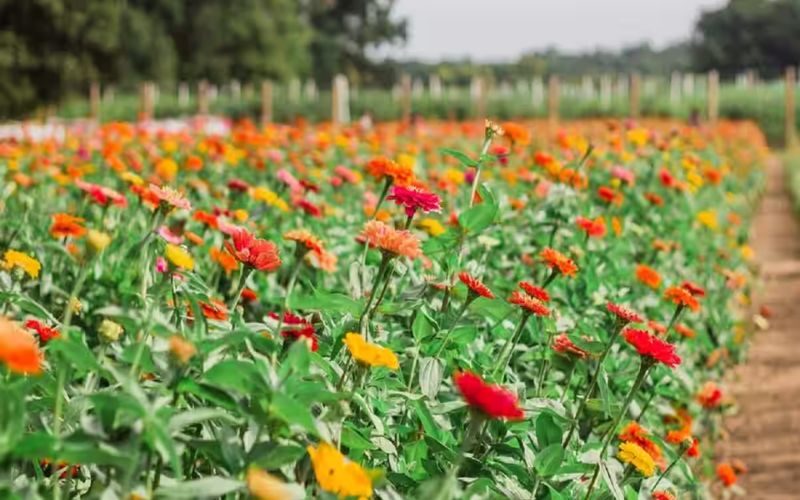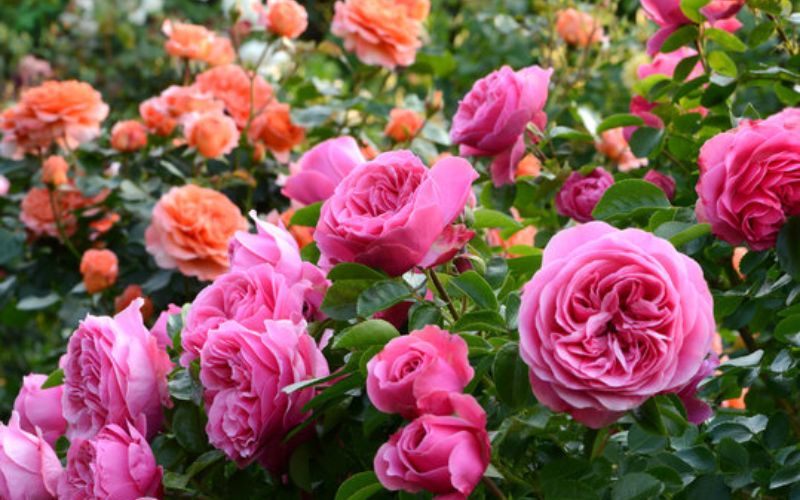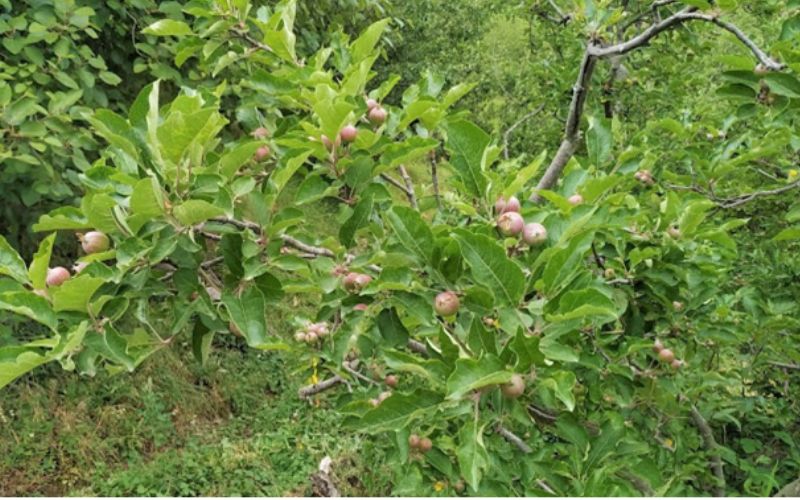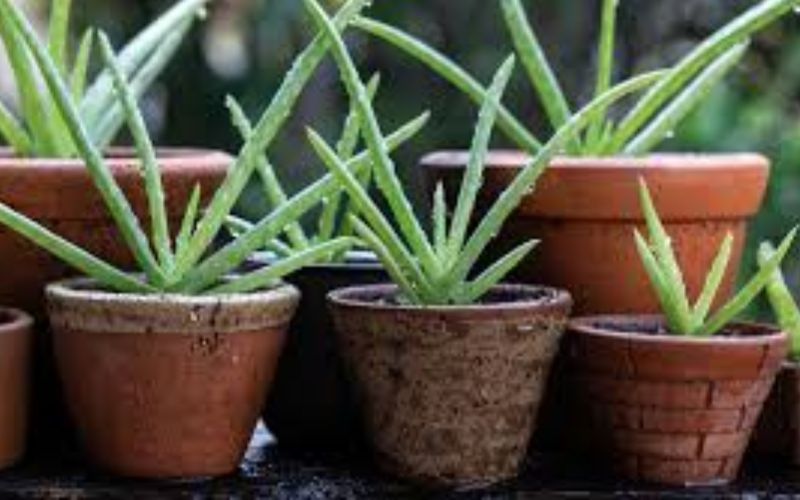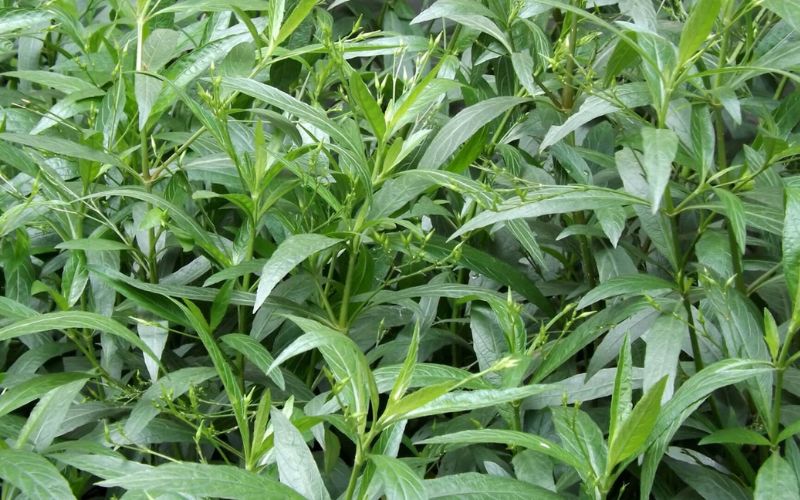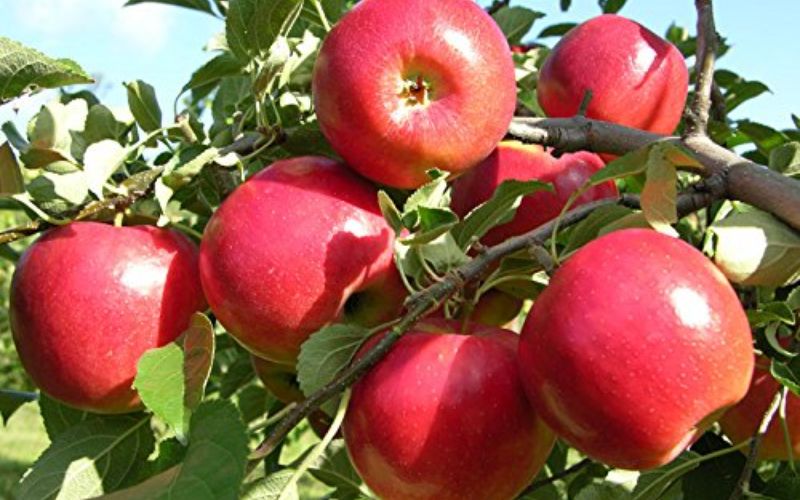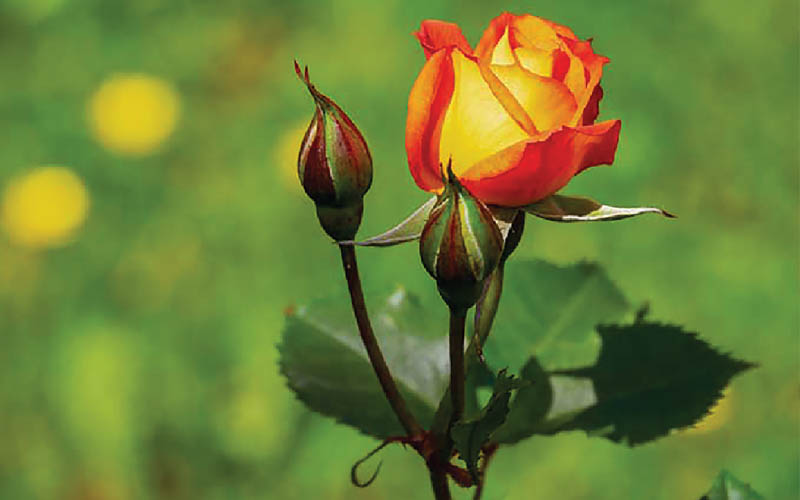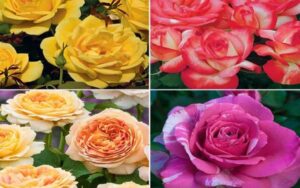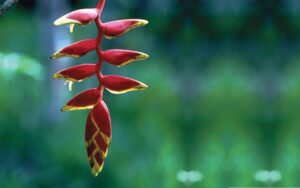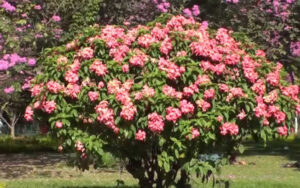Roses : Valued for their beauty, fragrance and versatility
The rose is a flowering plant from the Rosacea family. It is well known for its beautiful and fragrant flowers, which come in a variety of colors such as red, pink, white, and yellow. Roses are cultivated all over the world for their ornamental and commercial value, and they are often used in gardens, bouquets, and as a symbol of love and beauty.
The rose has a long history dating back to ancient times, and it has been cultivated for its beauty and fragrance for over 5,000 years. Now, there are over 100 different species of roses, and countless hybrid varieties.
Roses are typically grown in well-drained soil, and they require ample sunlight and water. They can be propagated through cuttings or by seed, and they are often pruned to promote healthy growth and to control their shape.
In addition to their ornamental value, roses are also used in perfumes, cosmetics, and as a flavoring in food and drinks. Some species of roses are also used for medicinal purposes, as they contain compounds that have anti-inflammatory and antibacterial properties. Fossil remains of rose were found in Oregon and Colorado and are estimated 30 million years old. Rose cultivation in India developed with the distillation of roses as mentioned by Charaka in Ayurveda around 100 A.D.
Rose cultivation has been a lucrative business for many years. Therefore, there is always a high demand for roses, making rose cultivation a profitable venture.
Before starting a commercial rose cultivation business, it is essential to understand the basics of rose cultivation. Rose plants require proper care and management, including planting in fertile soil, regular watering, pruning, and pest and disease management.
The first step in rose cultivation is selecting the right cultivar for your region. The climate and soil type play an important role in determining which cultivar will thrive in your area. The growth habits of the rose variety should also be considered. Some varieties may be more suited to greenhouse cultivation, while others may perform better in an open field. The plant size, growth rate, and ease of propagation should also be taken into account.
Lastly, the market demand for the specific rose variety should be considered. It is essential to choose a variety that is in demand and can fetch a high price in the market to ensure profitability.
Overall, a good variety of rose for commercial cultivation should be high-yielding, disease-resistant, suited to the specific growing conditions, and in demand in the market. With careful consideration of these factors, commercial rose growers can select the right variety and successfully produce high-quality roses for sale.
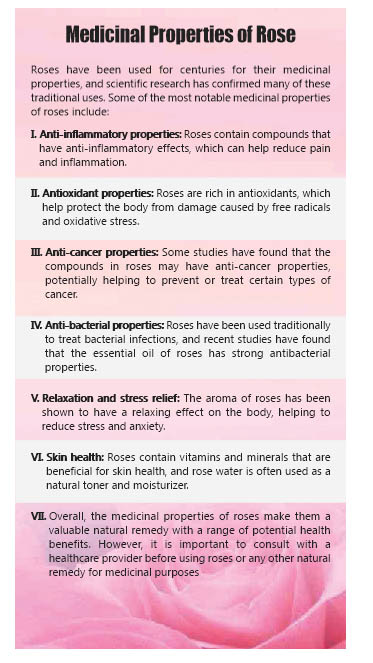
Importance and uses of roses
Roses are one of the most popular and widely cultivated flowers in the world, valued for their beauty, fragrance, and versatility. Here are some of the importance and uses of roses:
Ornamental purposes: Roses are primarily grown for their beauty and are used for ornamental purposes in gardens, parks, and public spaces. They come in a wide range of colors, sizes, and forms, making them a versatile choice for any landscape design.
Cut flowers: Roses are one of the most popular cut flowers, used in floral arrangements and bouquets for special occasions, such as weddings, anniversaries, and Valentine’s Day.
Perfumery: Roses have a strong, sweet fragrance that is highly prized in the perfume industry. Rose oil and rose water are both used in perfumes, soaps, and other cosmetic products.
Culinary uses: Rose petals are edible and are used in a variety of culinary applications, such as flavoring teas, syrups, and desserts. Rosewater, a byproduct of rose distillation, is also used as a flavoring agent in Middle Eastern and Indian cuisine.
Symbolic meaning: Roses have long been associated with love, romance, and beauty, and are often used as a symbol of these sentiments in literature, art, and culture.
Overall, roses are a versatile and important flower with many uses and meanings, making them a cherished part of human culture and history.
Cultural: Roses have symbolic significance in many cultures and are often associated with love, beauty, and purity. They are commonly used in weddings, funerals, and other ceremonial events.
Overall, roses have a wide range of uses and are valued for their beauty, fragrance, and health-promoting properties.
Scientific classification of the Rose:
Kingdom: Order: Rosales Family: Rosaceae Subfamily: Rosoideae Genus: Rosa
The genus Rosa includes over 100 species of flowering plants, many of which are cultivated for their ornamental value. Within the genus, there are many different cultivars and hybrids that have been developed for their size, shape, color, and fragrance. The scientific classification of roses is important for understanding their evolutionary relationships and for categorizing different species and varieties based on their characteristics.
Recommended Varieties:
Indian Rose Varieties:
About 600 cultivars of roses have been developed in India. Some of important are given below:
IARI, New Delhi:
Hybrid Tea:– Abhisarika, Anurag, Arjun, Bhim, Charugandha, Chitwan, Dr. B.P. Pal, Dr. Bharat Ram, Ganga, Jawahar, Mother Teressa, Mridula, Mrinalini, Nurjahan, Priyadarshini, Pusa Sonia, Pusa Gaurav, Pusa Bahadur, Pusa Priya, Pusa Garima, Raj Kumari, Raktagandha, Rangasala, Surabhi, Vasant. New varieties from IARI are Pusa Ajay, Pusa Arun, Pusa Mansij, Pusa Mohit, Pusa Abhisek, Pusa Komal, Pusa Manhar, Pusa Muskan, Pusa Sharbati, Pusa Urmil, Pusa Priya and Pusa Ranjan.
Floribunda: Arunima, Chandrama, Deepshikha, Himangini, Mohini, Nav Sadabahar, Neelambri, Prema, Pusa Barahmasi, Pusa Pitamber, Pusa Virangana, Sadabahar, Saratoga, Shabnam, Sindhoor, Suchitra and Suryodaya.
Miniature: Delhi Scarlet.
Polyanthas: Polyantha roses are a class of roses that originated from crosses between two rose species, Rosa chinensis and Rosa multiflora, in the late 19th century. The name “Polyantha” comes from the Greek words “poly,” meaning many, and “anthos,” meaning flower, which describes the abundant clusters of small blooms that these roses produce.
Polyantha roses are typically small, bushy plants that grow to about 2-3 feet tall and wide. They are valued for their profuse clusters of small, delicate flowers that are produced in large numbers throughout the growing season. The flowers are usually pink or white, but can also be found in shades of red, yellow, and orange.
Polyantha roses are known for their hardiness, disease resistance, and ease of care, which makes them popular choices for use in gardens, landscapes, and as container plants. Some popular varieties of Polyantha roses include ‘The Fairy’, ‘Cecile Brunner’, and ‘Marie Pavie’. Swati
Hybrid Tea Roses: These roses are known for their large, high-centered blooms that come in a wide range of colors. They are popular for their long stems, making them ideal for cut flower production. Some commercially grown varieties of hybrid tea roses include ‘Peace,’ ‘Mister Lincoln,’ and ‘Double Delight. ‘Forever Young,’ ‘Sonia,’ and ‘Avalanche.’
Floribunda Roses: These roses are a cross between polyantha and hybrid tea roses, resulting in clusters of smaller blooms on each stem.’They are popular for their long blooming period and come in a range of colors. Some commercially grown varieties of floribunda roses include ‘Iceberg,’ ‘Europeana,’ and ‘Angel Face.’Pink Perfection,’ ‘Gold Medal,’ and ‘Tuscan Sun.’
Grandiflora Roses: These roses are a cross between hybrid tea and floribunda roses, resulting in large, showy blooms that are often produced in clusters. They are known for their disease resistance and come in a range of colors. Some commercially grown varieties of grandiflora roses include ‘Queen Elizabeth,’ ‘Gold Medal,’ and ‘Arizona.’
Climbing Roses: These roses are characterized by their long, flexible stems that can be trained to climb up trellises or other support structures. They are popular for their versatility and come in a range of colors. Some commercially grown varieties of climbing roses include ‘New Dawn,’ ‘Don Juan,’ and ‘Blaze.’
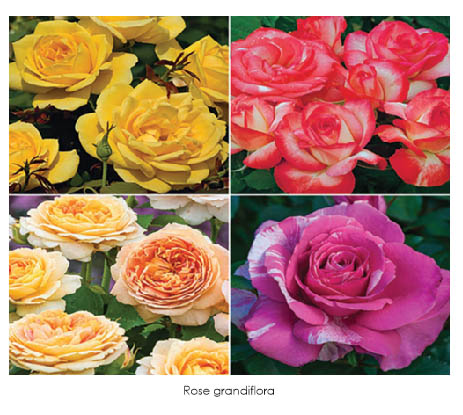
Spray Roses: These roses produce multiple blooms on each stem, making them ideal for use in bouquets and floral arrangements. They come in a range of colors and are popular for their delicate appearance. Some commercially grown varieties of spray roses for cut flower production include ‘Yelloween,’ ‘Snowflake,’ and ‘Sweetness.’
These roses have a more natural, open flower shape than other types of roses and are popular for their fragrance and romantic appearance. They come in a range of colors and are often used in bridal bouquets and other special occasions. Some commercially grown varieties of garden roses for cut flower Production include ‘David Austin Juliet,’ ‘Keira,’ and ‘Rosa Mundi.’
Miniature Roses: These roses are smaller in size than other types of roses and are often grown in pots or used as border plants. They come in a range of colors and are popular for their long blooming period. Some commercially grown varieties of miniature roses include ‘Jeanne Lajoie,’ ‘Red Cascade,’ and ‘Giggles.”Millie,’ ‘Bambino,’ and ‘Red Minimo.’
English Roses: These are a group of roses developed by David Austin, known for their old-fashioned, romantic appearance and fragrance. They are a cross between old garden roses and modern hybrid teas.
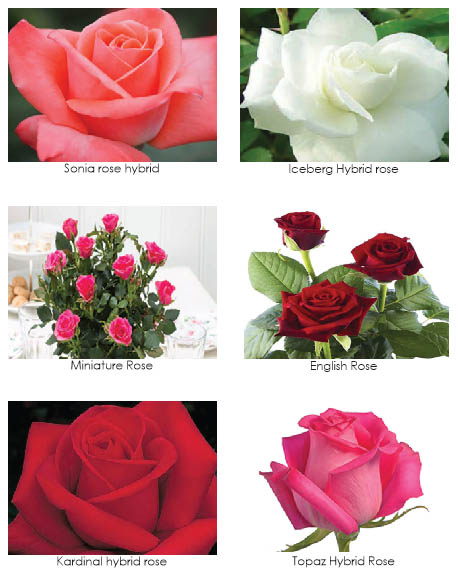
Other Important cultivars of cut-roses for export
Cora, Corvetti, Diplomat, Femma, First Red, Grand gala, Kiss, Konfetti, Lambada, Laser, Nicole, Noblesse, Osiana, Papillon, Parea, Pavrotte, Rodeo, Rossini, Sacha, Samura, Sandy, Sangaria, Soledo, Susanne, Texas, Tineke, Vivaldi and Taj mahal
First Red: This is a popular red hybrid tea rose variety that is known for its long vase life and high yield. It produces large, high-centered blooms with a strong fragrance.
Grand Gala: This is another red hybrid tea rose variety that is popular in the Delhi NCR region. It has a large, classic rose shape and a deep red color. It is known for its strong fragrance and long vase life.
Sonia: This is a pink hybrid tea rose variety that is popular for its delicate color and long stems. It produces large, high-centered blooms with a subtle fragrance.
Iceberg: This is a white floribunda rose variety that is popular for its profuse blooming and disease resistance. It produces clusters of small, pure white blooms with a mild fragrance.
Kardinal: This is a red hybrid tea rose variety that is popular for its large, velvety blooms and strong fragrance. It has a classic rose shape and a deep red color.
Topaz: This is a yellow hybrid tea rose variety that is popular for its bright, cheerful blooms and long vase life. It produces large, high-centered blooms with a mild fragrance.
These are just a few examples of the commercially grown rose varieties in india. The specific varieties grown will depend on factors such as climate, market demand, and the expertise of the growers. n


